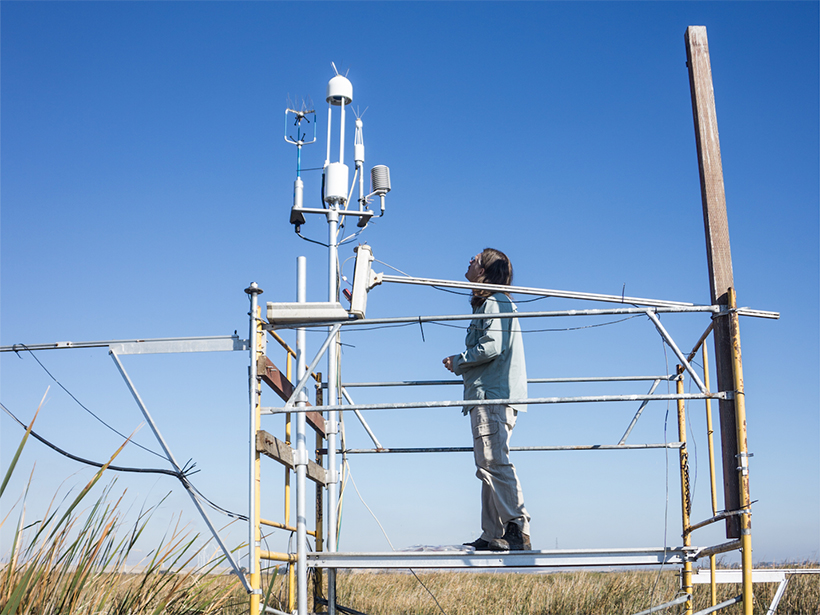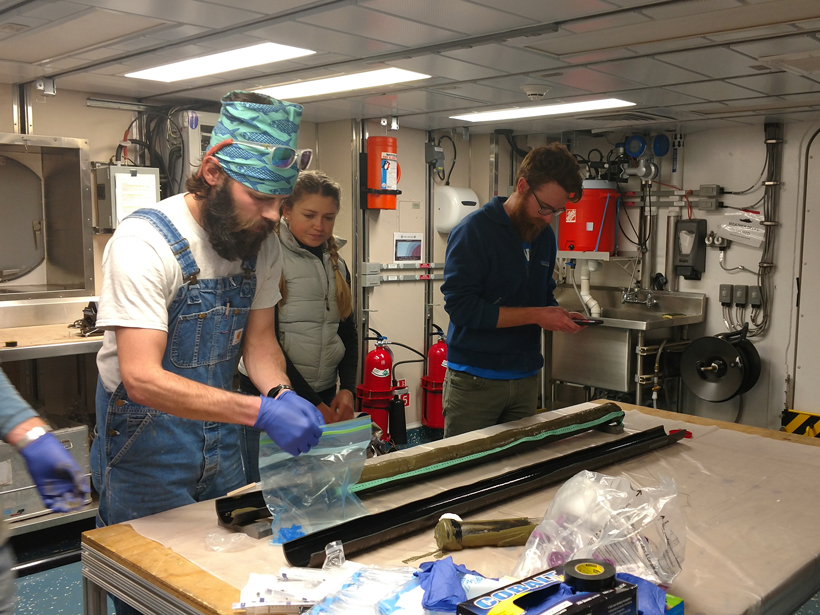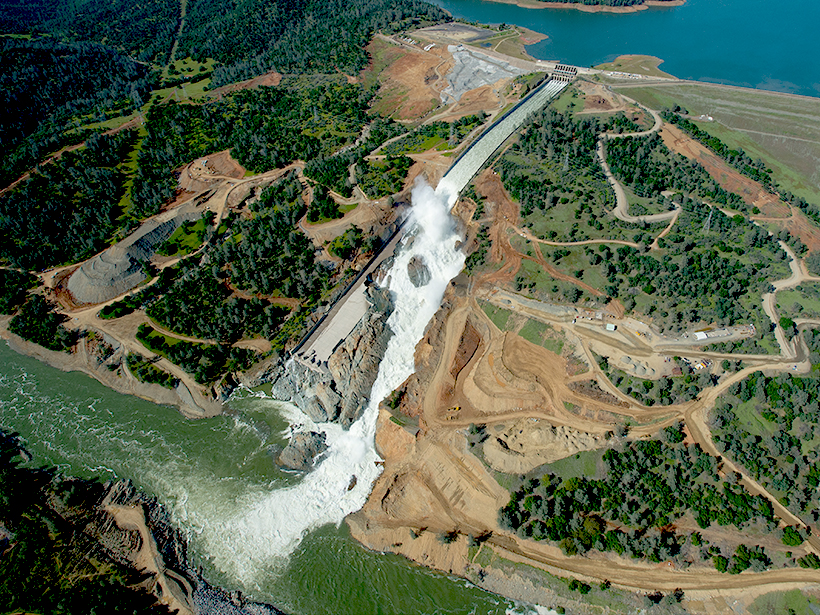Evaporation can demonstrate the effects of crop irrigation on decadal trends in evapotranspiration at a regional spatial extent.
California
Restored Wetlands Could Lower Local Surface Temperatures
A 3-year study of wetlands and cropland in a major California delta highlights the need to consider the physical effects of vegetation when planning land use changes.
California’s Water Savings Dwindle When Drought Fears Subside
Policy changes and media attention affect how much water Californians use, as well as how long these behaviors prevail. Could public awareness shift behaviors toward long-term conservation?
What Will Redwood Trees Do Without Foggy Days?
Coastal California fog—a key source of water for the iconic redwood tree—has declined by a third. Can a trace gas, carbonyl sulfide, be used to assess the effect on plant productivity?
Exploring Methane Gas Seepage in the California Borderlands
Early-career scientists aboard the 2016 UNOLS Chief Scientist Training Cruise explored recently reactivated underwater methane seeps in the San Diego Trough.
Tracing Water’s Path Through the Santa Clara Valley Aquifer
In an increasingly drought prone climate, scientists study the impacts of drought on aquifer systems.
How to Trigger a Massive Earthquake
Humans may be to blame for California’s second-largest 20th century earthquake, and a team of seismologists has now proposed how that could have happened.
California Floods Linked to Atmospheric Water Vapor “Rivers”
Narrow atmospheric streams of water vapor that deliver heavy rains are more commonly associated with floods and debris flows in northern California than with flash floods in southern California.
Powerful Pacific Forces Disrupt the California Current
Scientists create a 66-year data record to shed light on the role of El Niño in the California Current System’s shifting temperatures.
How Will Climate Change Affect the California Current Upwelling?
The results of new simulations that account for internal climate variability contrast with previous projections of how this vital West Coast current will respond to anthropogenic warming.










